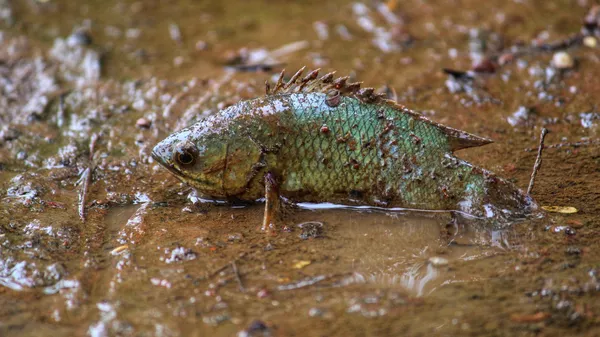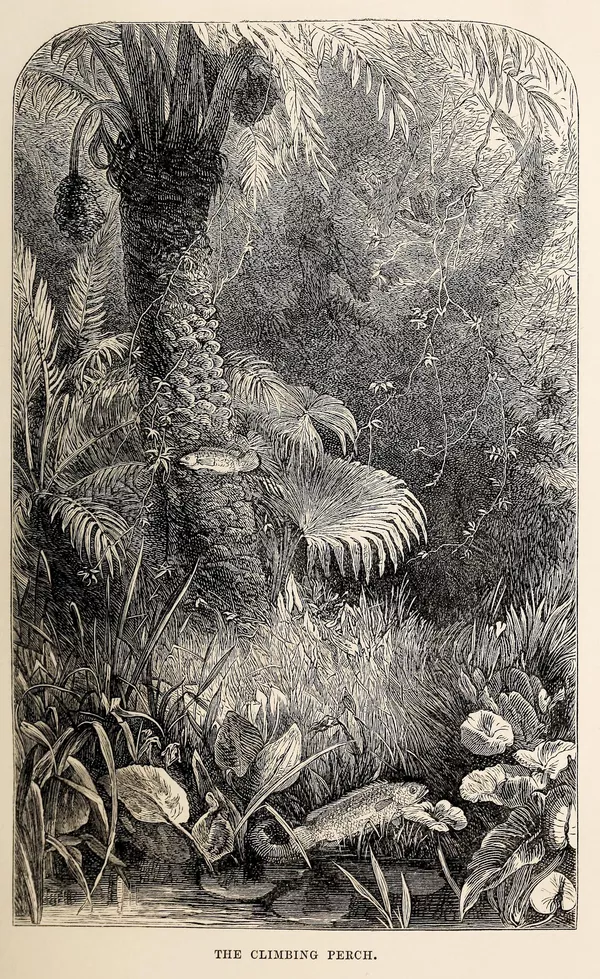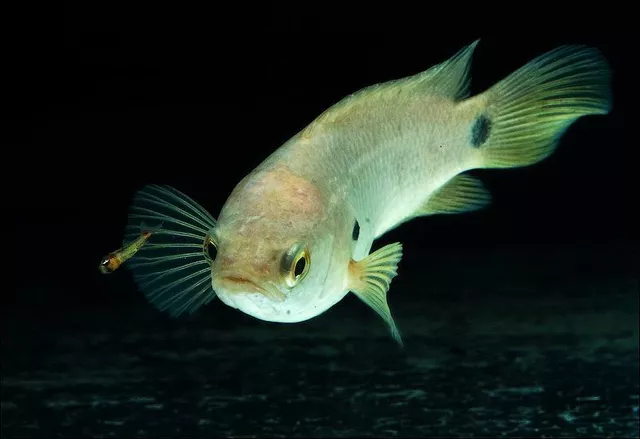
Science has long been concerned with the question of how aquatic animals acquire the ability to breathe air. One amazing example is the creeper fish, or persimmon. Russian scientists are studying it in its natural environment and at the same time helping to restore traditional crafts in Vietnam.
The mystery of the “turtle fish”
The first information about fish, which spend part of their lives on land, can be found in ancient Greek authors. The most famous example is the river eel, which can crawl on wet ground. Most amphibious fish live in the tropics, which is why European researchers have mentioned them since the beginning of the Age of Discovery.
At the end of the 18th century, the German naturalist Markus Bloch compiled an encyclopedia on ichthyology. A collection of dozens of specimens was delivered to him from the south of India, in which he discovered an unusual fish with a head resembling a shell. The scientist named the new species “turtle fish.” In a drawing from that time it is depicted with blue eyes.
Around the same years, the Holstein naturalist Dagobert Karl Daldorf, according to some sources, a native of Moscow, left for India. The Copenhagen Natural History Society commissioned him to assemble a collection of local fauna. In one of his scientific notes, he shared observations about a “perch” that climbed onto a palm tree growing near a pond, using spiny fins and gill covers.

Daldorf's message was translated into English, and many European publications reprinted it, embellishing it along the way. It was claimed, for example, that fish climb trees to drink sap or even palm wine. The famous naturalist Georges Cuvier combined these cases into an independent genus, which he named Anabas (from Greek - “ascent”). Later, a colonial official, Mitchell, wrote a note in a scientific journal based on the words of a servant who had allegedly seen persimmon climbing into trees many times.
Already in the 19th century, some scientists doubted this evidence. At the same time, in the Dravidian language and some Malaysian dialects this fish is called “tree-climbing,” which was noticed by the American ichthyologist Hugh Smith in the mid-20th century.
Since then, the persimmon has been observed alive many times; none of the scientists have seen it climbing trees. The reasons, even theoretical ones, that could prompt it to do this are unknown. And yet the issue has not yet been resolved, says Dmitry Zvorykin, candidate of biological sciences, senior researcher at the A. N. Severtsov Institute of Ecology and Evolution of the Russian Academy of Sciences (subordinate to the Russian Ministry of Education and Science). He worked for several years at the Russian-Vietnamese Tropical Center, detailed the history of the discovery of the species in the Natural History Archives, and became the first author from Russia in this British journal.
"Inaccurate data and errors sometimes play a positive role. Rumors accompanying reports of fish traveling on land and climbing trees prompted scientists to study these unusual creatures," says the biologist.

Where do the Anabas crawl?
Now science knows of many air-breathing fish, and the most interesting ones live in the tropics. These include the climbing rope, or creeper fish, one of the most famous amphibious fish. Small, resembling a perch, it is widespread in fresh water bodies of Vietnam, Taiwan, Laos, Cambodia, Malaysia, and India.
During the rainy season, perches take refuge in small puddles along river banks. There they reproduce without any competition, laying many thousands of eggs. Within a day the larvae hatch. The grown juveniles climb onto land and spread out. Most die; at best a dozen individuals reach sexual maturity.
“We don’t fully understand how they choose a direction,” continues Dmitry Zvorykin. “But this is the survival strategy of this species. They conquer with numbers”.

At the end of the 20th century, zoologist Eugene Balon argued that fish protect their eggs from predators for some time, that is, they demonstrate primitive parental care. This detail is included in many encyclopedias and textbooks.
“Where did he get this from?” asks Zvorykin. “This behavior requires time and effort, there are fewer offspring, but they survive better. No one has seen parental care in the climbing rope. Most likely, this is a myth.” Just like blue eyes - in fact, in this species they are yellowish or reddish.
Anabas crawl on land, relying on fins and gill covers. They do not have special adaptive features for “walking”. They usually move short distances, but sometimes they cover two hundred meters. In humid conditions outside the reservoir, they can stay for several days. But without air in the water they die in a matter of hours.

“This feature allows it to survive in bodies of water where other fish cannot exist. Thus, the species avoids competition, which is important for the tropics,” explains the biologist.
The anabas breathe air thanks to a labyrinthine organ located under the gill covers. “It looks like a lump of thin winding plates. Due to its large surface, it has good gas exchange efficiency,” Zworykin clarifies.
In addition to the climbing rope, for example, popular aquarium fish have a labyrinthine organ - bettas, macropods, gourami.
Scientists have found that the ability to go onto land and breathe arose in fish many times throughout evolution, independently in different groups. Labyrinthids appeared approximately 50 million years ago and most likely originated from some small freshwater fish (they are not related to amphibians). The anabas have existed unchanged for ten million years.

Return to tradition
The anabas forms an important part of the diet of Southeast Asians. Archaeological evidence suggests that it has been consumed since at least the Stone Age. The fish is grilled, stewed in pots with other products, but most often boiled, since soups are eaten throughout the day.
The anabas has been bred in ponds since ancient times, often combined with rice growing. Nowadays, due to the active use of fertilizers and pesticides, this tradition has begun to fade. Now it is being revived with the support of the Food and Agriculture Organization of the United Nations (FAO).
“At the end of the 20th century, international programs focused on breeding the most effective aquaculture species, such as tilapia and large catfish,” says Dmitry Zvorykin. Over time, however, it became clear that these species were becoming invasive and threatening native fauna. Therefore, the breeding of small native fish species is now encouraged. “It’s much cheaper, simpler and safer for the environment. It’s accessible to many small farmers,” notes the biologist. True, there are nuances. If you breed persimmon in ponds, you must use hormonal injections and special feeding methods. This is where the help of scientists was needed.
Being a widespread species, the persimmon helps solve environmental problems. If it is caught or bred uncontrollably, it is unknown what will happen to the local biological communities.
Last but not least, this fish is an important object of fundamental research. It helps to reconstruct the exit of animals to land. By studying fish that can breathe air and move in a different environment, scientists are trying to understand how and why this happened to the ancestors of the first land creatures.
